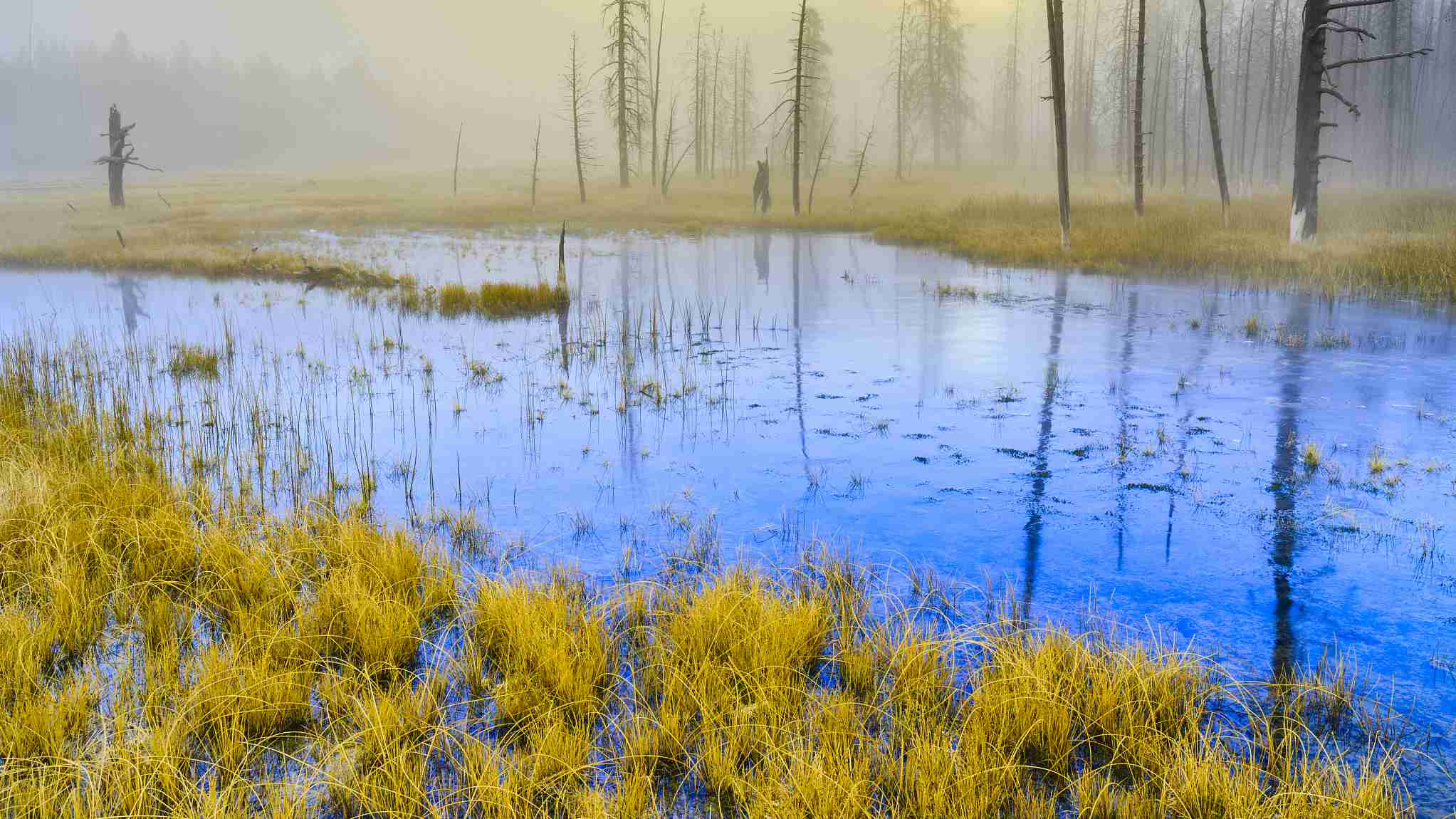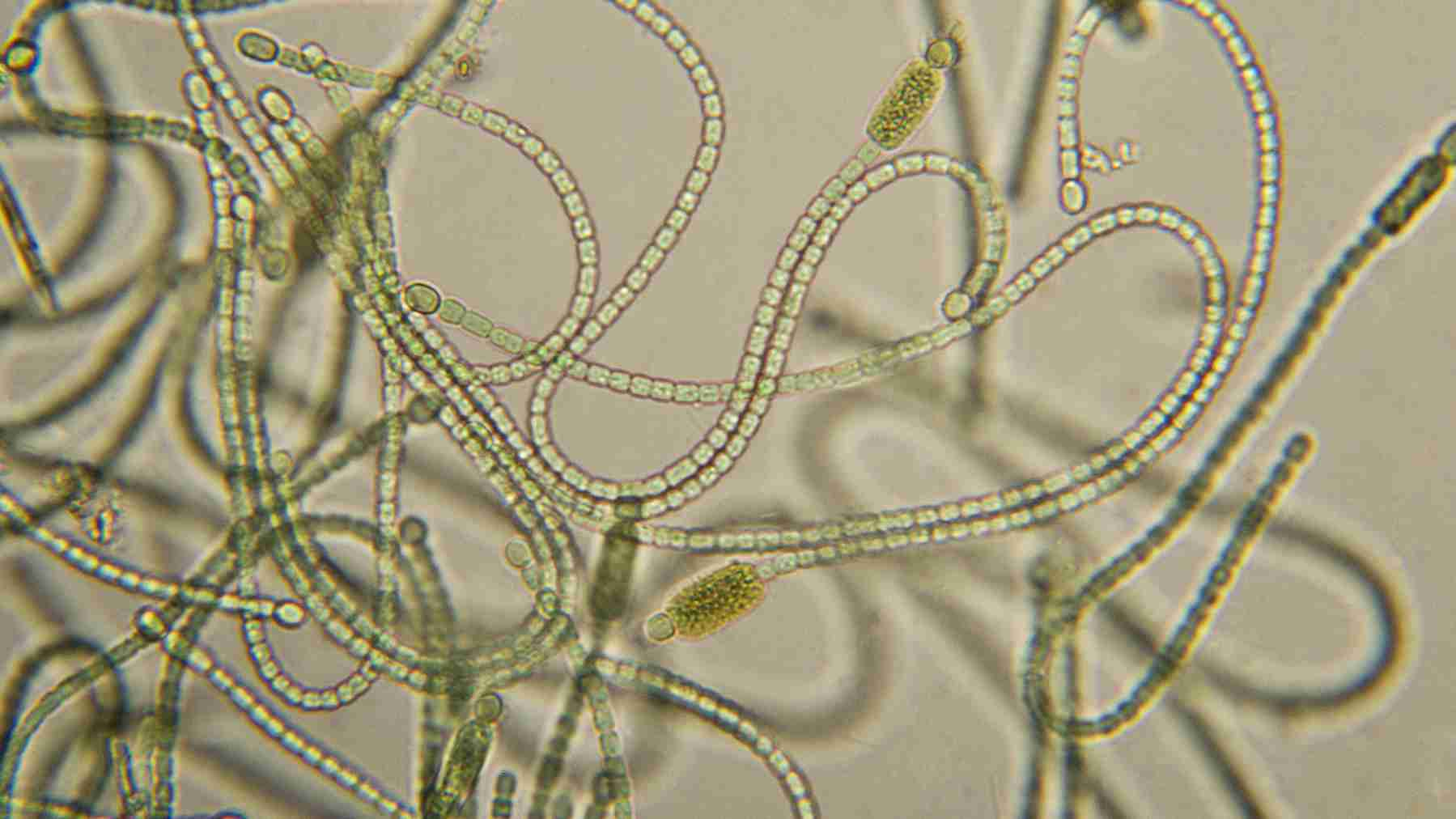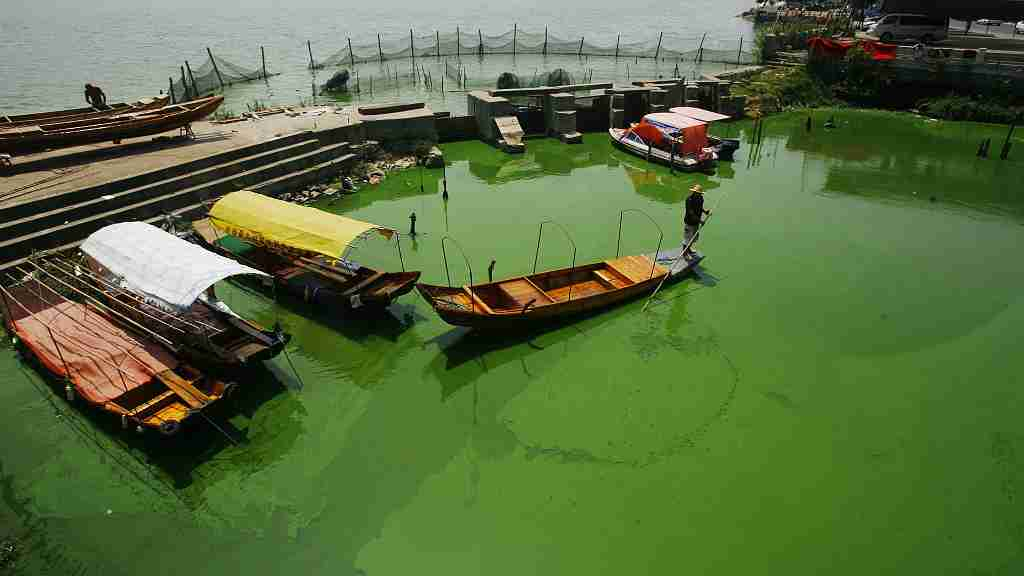Oxygen is essential to human survival, but where does it come from? One might assume that this precious gas is only released by plants during photosynthesis. However, most of the oxygen in the Earth's atmosphere is produced by an organism called cyanobacteria.

Cyanobacteria grow in water. /VCG Photo
Cyanobacteria grow in water. /VCG Photo

Cyanobacteria under the microscope. /VCG Photo
Cyanobacteria under the microscope. /VCG Photo
Cyanobacteria are one of the largest and most important groups of bacteria on Earth. They are algae-like bacteria that obtain energy from sunlight and produce oxygen. Although invisible to the naked eye, cyanobacteria are present all around, from freshwater to ocean and even the soil. There can be thousands of them in just a drop of water.
Even though humans probably cannot live without cyanobacteria, too much of them - cyanobacteria bloom - can cause serious problems, such as water pollution and production of toxins in water. Exposure to cyanobacteria bloom can even kill animals and plants.

Cyanobacteria bloom can cause serious problems. /VCG Photo
Cyanobacteria bloom can cause serious problems. /VCG Photo

Cyanobacteria bloom can cause serious problems. /VCG Photo
Cyanobacteria bloom can cause serious problems. /VCG Photo
What causes cyanobacteria bloom? Climatic changes and an increase in nutrients are two main factors that lead to cyanobacteria bloom, as cyanobacteria grow in warm, nutrient-rich environments. Global warming, represented by temperature rise and glacial melting, is creating more and more warm water environments for cyanobacteria to grow. In addition, excessive usage of fertilizers in agricultural production also provides a good nutrition for cyanobacteria to thrive.
Micro-earth
People often find it hard to understand the presence and role of microbes in their environment and daily lives. They are hard to see, but are everywhere. In this series, CGTN focuses on one of the smallest organisms in nature, and explores how these powerful organisms can either save us or destroy us.
(All photos via VCG)
(If you want to contribute and have specific expertise, please contact us at nature@cgtn.com.)